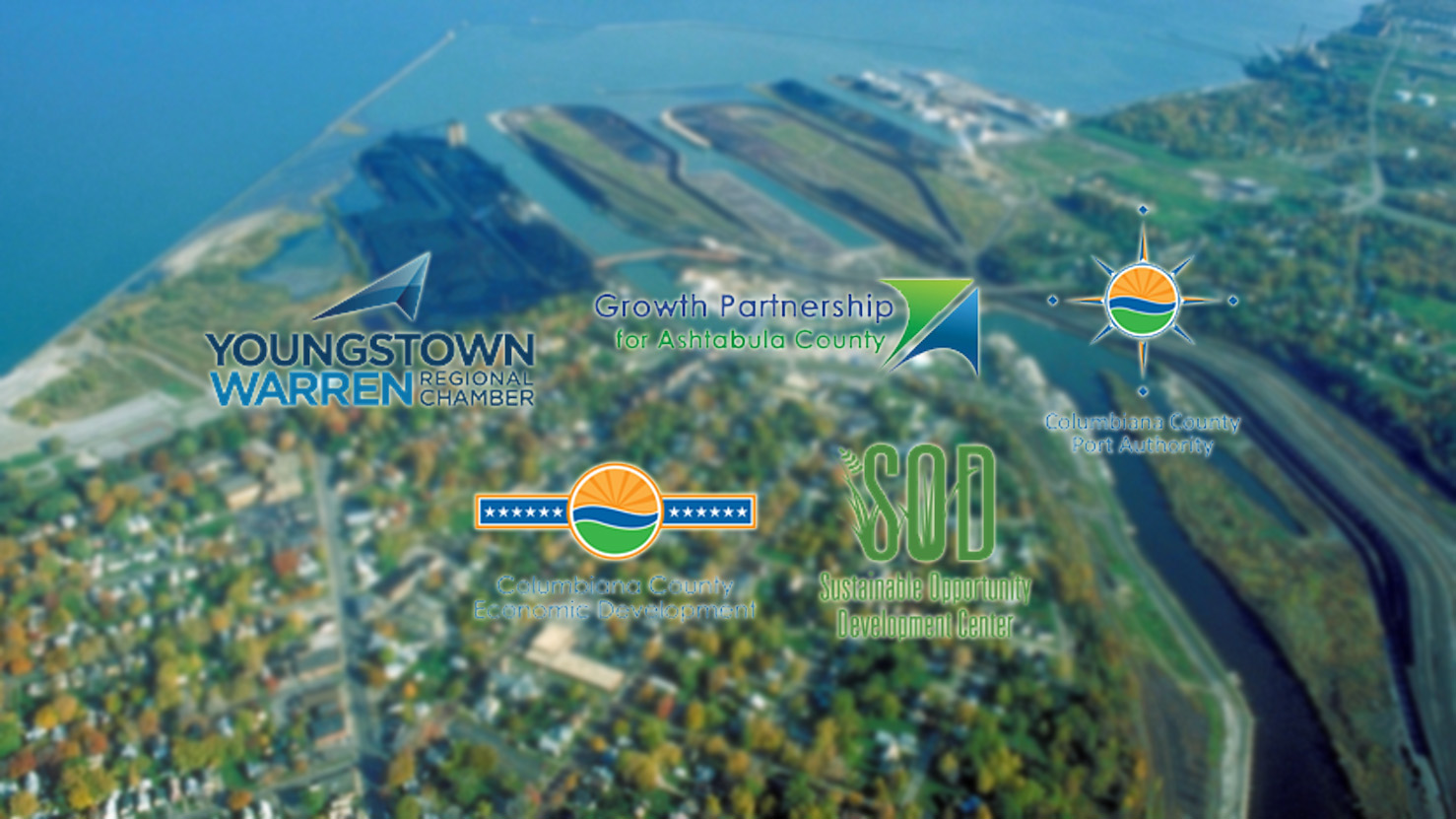YOUNGSTOWN, Ohio – A new initiative to promote business growth in Mahoning, Trumbull, Columbiana and Ashtabula counties aims to capitalize on available properties and other assets and to align the resources of the five partner organizations for mutual benefit, representatives of the entities involved say.
The Youngstown/Warren Regional Chamber, Growth Partnership for Ashtabula County and three Columbiana County-based entities – Columbiana County Port Authority, Columbiana County Office of Economic Development and the Sustainable Opportunity Development Center – announced in March they are joining forces to brand and jointly market the Lake-to-River region.
The Lake-to-River Corridor comprises the four counties, which border western Pennsylvania and connect Lake Erie to the Ohio River along state Route 11.
The initiative “creates new opportunities” for the organizations to communicate and plan strategies together, says Greg Myers, executive director of Growth Partnership for Ashtabula County.
At its base, it provides an opportunity for the organizations to more regularly discuss how to collectively leverage strategic planning, marketing opportunities and “our unique collective advantages in the marketplace” to help existing businesses grow and to create “a unique area within Ohio” to attract targeted industry segments, he continues.
“We have to be able to tell that story. It’s a matter of having all of your ducks in a row and having the story in hand prior to the outreach,” says Sarah Boyarko, chief operating officer at the Regional Chamber. “We have to know who’s already in the market, what opportunities are here and why they should be here. If you don’t have that when you do the outreach, you’re not very well going to get a good response.”
Throughout the region are several common driver industries, including automotive, primary and fabricated metals and agriculture.
The entities have been in conversation for a year and a half about potential areas of collaboration, Boyarko says. The chamber, which represents businesses primarily in Mahoning and Trumbull counties, has “longstanding relationships” with its partners in Ashtabula and Columbiana counties.
“There’s a lot of value for us coming together regionally to be able to leverage some of the collective assets of all of those entities, particularly those of the Youngstown chamber, because they’re larger and have a bit more resources,” Myers says.
The Regional Chamber, Growth Partnership and Port Authority also participate in Team NEO, but the value in the Lake-to-River partnership is the four counties have unique “competitive assets, even within the Team NEO footprint,” he says. The four counties are “much more aligned socioeconomically” with each other than they are with the counties in the broader northeastern Ohio region.
Boyarko points to the representation of industries within the region as an asset that can be used to attract other investment by highlighting the advantages of the supply chain within the region.
Route 11 itself offers a key logistics piece. “You’ve got access to every single one of the counties located along that route,” she says. “A company might find a good home in the Mahoning Valley. But they want to access both of those ports. So having the knowledge that the chamber does around available properties and the Route 11 access to either one of those ports or possibly rail access to either one of those communities is definitely a benefit.”
Ashtabula County’s physical assets include two deepwater ports at Conneaut and Ashtabula that connect to the rest of the region by rail and road. Both are fully dredged and can accommodate any commercial shipping vessels on the Great Lakes. Both CSX and Norfolk Southern serve their docks.
“That creates a very interesting opportunity, particularly when you’re talking about manufacturing, which is really the base for the economy for each of those counties, and leveraging them for manufacturing growth and logistics opportunities,” Myers says.
There is also infrastructure that is in good operation and can be leveraged for manufacturing and logistics purposes, as well as large industrial sites that have the electricity and natural gas capacity to serve large-scale users, he adds.
As well as having the last deep-river port on the Ohio River at Wellsville, Columbiana County has large manufacturing and agricultural bases, says Julie Needs, executive director of the Sustainable Opportunity Development Center in Salem. The county also benefits from its proximity to the Royal Dutch Shell ethane cracker being built in Monaca, Pa.
“In addition to that, we have a lot of space to grow,” she says. “We have a lot of greenfield and potential brownfield sites that could be developed.” Also, she says, many of the companies in Salem have been there for years, which help to attract companies from outside the area.
Boyarko as well points to the unique relationship each of the partners has within its base business community, and urges using that community as its partner in the outreach effort.
Needs, who has been with the SOD Center two years and regularly works with the two Columbiana County agencies, says she enjoys working with all of the partners. “Being able to join up with the Ashtabula Growth Partnership and working more closely with the Regional Chamber really has been exceptional,” she says.
The entities plan to meet monthly, with certain subcommittees meeting more regularly than others, Myers says. In addition to strategic planning, the partners will collaborate on marketing materials and other means to promote awareness of the Lake-to-River brand.
“It’s a combined effort of each organization in the partnership providing input on that targeted outreach; and each one of us has specific tasks to complete within that outreach,” such as creating the marketing materials, research or outreach efforts by phone, email or traveling outside the market to bring investment opportunities, she says.
“It could be a whole variety of things but it’s a collective effort.”
